Microtransactions: More Mindless Razzing on Print Media and Complaints About Modernization
June 4th, 2009
Those Guys Aren’t So Interesting
Last week I bought a new-but-probably-old-by-now copy of the Australian Official Nintendo Magazine. I bought it on the grounds that it discusses upcoming WiiWare and DSiWare games in a professional context. The services features a bunch of games that interest me such as Lit, New Adventure Island, Gradius Rebirth, Contra Rebirth etc. and yet the online coverage of these two services is weak. I think it’s an issue with the crediting system for press access to free games, an error on Nintendo’s part unfortunately.
I also bought to magazine to rank it against the grandfather of official Nintendo print; NMS. Just briefly; it’s head and shoulders above NMS. Respectable magazine, great visual layout, quality writing and they use their biggest asset (being related to Nintendo) to their advantage with great art assets and exclusive material. Although, the magazine appears to be iterative of the UK version. Hmm..
Anyways, in the reader mail was a response regarding a petty dispute over some score the magazine had previously assigned, the kid said it should have been a 93% and not a 90%. Big deal. It made me think though, why would anyone ever email into a writer of a magazine or website? I mean, most video game websites and magazines command a stringent diet of news, reviews and previews with the occasional feature. The three modes of writing don’t open themselves for discussion since they don’t really present an argument. That is, you can’t email a writer to debate over a news or previews piece because such content is usually above the reader’s point of access. If anything the reader might request the writer to drawn on their insight to offer an opinion, but really there is little argument one can make over news and previews. Reviews are often equally bland affairs of dolled out lists of features, so while there should be, there isn’t really an argument for readers to respond here either. The big three modes of operation could (and should) take sides, show opinions and make an argument, but due to the culture of the games writing media, it kinda hasn’t worked out that way – which is why you’re read me, rite? ^_^
I know that readers don’t always email in with questions regarding opinion. As previously suggested, they may simply wish to draw on the writer’s insight into the industry or share a few compliments. But I wonder, besides the love letters, requests for insight and quibbles over spelling errors, why would one ever need to email these publication in the reader email section?
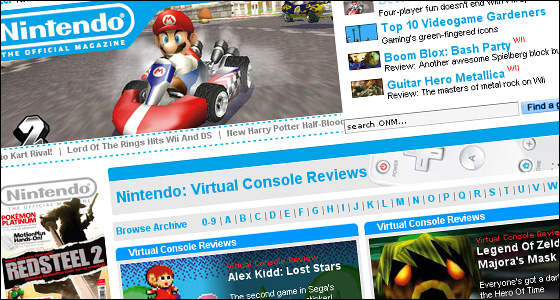
What about the emails already featured in the reader mail section? Good point! It didn’t take me much backtracking to remind myself why I usually avoid reading the dull community discussion. Most of the published letters (this applies for all print magazines I’ve read) are silly anecdotes that end with a magazine-promoting moral to boast the brand of the copy. Other emails are bouts of obvious stupidity, with readers asking whether X company is working on X dream game. Funnily enough, all email responses, even the remarkably positive ones are always met with a pessimistic sentence or two where the magazine staffer breathes snark at reader. Quite disgusting actually.
The reverse of this is what we have here on the internet, and I think of my articles at GameSetWatch as a case in point. GameSetWatch has as much weight as any good print mag, in fact the company have their own print magazine, but nevermind. So I write an article or two for the site and it’s discussed in the comments both there and a little here at my site. I receive an email or two by people who have particular responses to the article. I then cross to someone else’s blog who has written an article to make me out as a racist, and we debate the article for a few days there. Two American blokes also do a 30 minute podcast where they too discuss one of my articles, and then email me for feedback. I don’t mean to denigrate print or promote my gear, print is wonderful – I just paid a good deal of money for the latest two Gamespite volumes (they shipped today!) – but as was the message in my article about Hyper, print folks that aren’t progressive in their adoption of new media will simply fall behind. The web and blogs in particular are shaping games discussion as the community sees fit, wouldn’t hurt to see print attempting to be a little more bold.
ONM appears to be adopting new media well, like other Future products they have a website and forum, and the magazine integrates the two a little. Sort of like the old TotalGames.net site.
Discredited
Continuing on from this point. I was talking with someone the other day, and I said to them that I find all Australian game writers to be this white-wash of sameness. I can’t decipher who is who as they all seem to post the same neutral tone copy with an excess of forced Australian-ness.
After my damning comments, I later realized that I think this way for two reasons; firstly in some print magazines, writers are not credited for their individual pieces. The second reason is a fault of the games media and yes, yes, I know that whole news-reviews-reviews system. None of it seems open enough to allow writers to develop their own distinct writing style, not do the writers seem interested in personalizing their content. In fact, that’s one of the biggest issues with games writing, is that you can’t tell people apart!
Too Modern for a Traditionalist
Something I like about being a gamer, is how the medium accommodates players who wish to play games on any part of the social continuum. For example, I can player a single player game by myself, I can play with a faceless team mate on the otherside of the world, or I can play with a bunch of mates sharing a couch. I prefer to play single player experiences and occasionally with several mates in the same area. Predominately speaking though most of my game experiences are single player affairs and that’s how I like it.
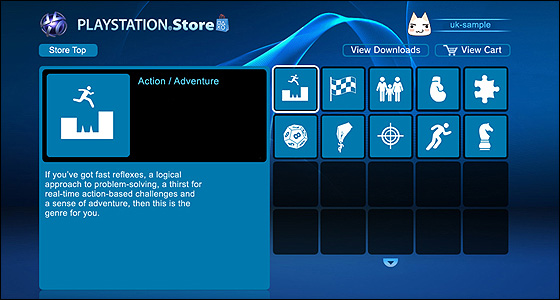
Like any good man, playing games is my time of respite, my time to relax in my own world. I’ve been playing like this forever, but in the past few months I’ve grown to loathe online play and for no real justifiable reason. When I load up the Playstation 3 it automatically signs me into the Playstation Network, fair enough. The same goes for when I use my brother’s computer with the Steam service.
I find that during my time of relaxation the online integration elements bother me, significantly. I don’t like the Playstation 3 overlaying alerts of a friend signing on or the weak wireless reception in my room. The same applies for the request I get to play Team Fortress 2 when using my brother’s ID on Steam. Obviously I can switch these devices off, but that isn’t my case here. My point is that I play games to get away from socializing and all that stuff, and these features constrict that. I accept that this is a modern reality because the integration is simply great and many players choose to respond to the alerts, but I’m personally less willing. I think it’ll be sometime before I change my mind. I guess I’m caught in the rift called ‘modernization’.
I’m Envious, Mr Parish
April 24th, 2009
With the possible exception of the monthly Link Out column, I rarely ever participate in the overrated blogging ritual of glorifying another blog in the hopes of obtaining that ever elusive trackback link and a complementary slice of recognition. The truth is, beyond the legendary Simon Carless (smooch!), no one with a crown and trophy room in this internet microcosm genuinely loves the little guy. *sobs* Oh it’s not all bad, I’m just a terrible writer.
Here comes the eventual ‘but’; but today I want to discuss my favouritest of favourite writers; Jeremy Parish and his merry band of Retronauts. Specifically the 1UP Retro and RPG blogs, and to a slightly lesser extent GameSpite. This trio of blogs provide a good chunk of my retro and niche gaming readings. I usually reserve a special spot in my week to huddle up and read the collective group of posts from these sites. Always warms a soft spot in my heart.
They cover a type of gaming that I’ve become very fond of, and do it in a very intelligible and respectful manner. The collective writing style of Jeremy, Kat and Ray is smart, clever and always interesting, if occasionally snarky (I mostly blame Jeremy for that). Their writing approaches are diverse, individual and rather personalized. Each writer has their own character within the language and as a whole the group of their have their own congruent style of writing. I’m always gleaming interesting writing techniques from what they have to say. The content itself is wholly unique, these guys are masters of their own niches and cover their respective specializations in progressive, uncategoric ways of writing. Never mind the content they cover, it actually feels good to read insightful journal natured writing on games.
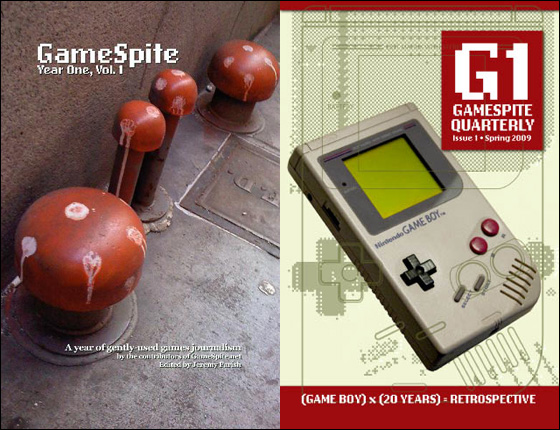
For these writers, it’s more or less their job to become enveloped in this truly hardcore brand of games, and their history supports this with an encyclopedic knowledge on various mainstream and niche subjects. They also have a strong frequency of posts, a rare thing for most outlets covering this material.
I’m out of compliments for now. All I really want to say is that I wholeheartedly admire the roles that these guys are playing out. What they’re doing for niche games coverage in my mind is having a real impact, and I think their influence will be significant. I’m envious though, and not in a green kinda way. The lives of these people revolves around covering specialized topics with the freedom that they desire. It’s passionate people producing labour-of-love content that can’t be found anywhere else, and that so few people actually care or know about. When I blog about something that I know people aren’t particularly interested or well versed in, such as the games-culture relationship or even some of the retro stuff, I feel a great pride in being one of the only people writing about it, even if my audience is minuscule. Their jobs are what I’d personally endeavour to live out, if that were possible. The content made by this team of talented writers remind me of some of the most evergreen feelings I’ve had playing games.
Furthermore Jeremy and many of the writers for these blogs contribute elsewhere on podcasts, video shows, print and web. A good example of this dedication is reflected through the print produce starting to come out of Game Spite. Near the end of last year, Jeremy collated 350 pages of collected critiques from the portal and produced them into the site’s first yearly book, which he then distributed by himself. Just a few days ago, the maestro announced that he was turning the site on it’s head, where the writers firstly do copy for a new print magazine, rather than the site. The same content is being made for and uploaded to the site, rather the team operates as though they’re writing for print first, with a magazine being released regularly full of content. It’s a marvelous idea.
Hyper, Print Media and Tips for Survival
April 13th, 2009
(Not that I’m in any position to suggest survival tips to people far more credible than myself)
Coloured with a deep red and strong outlines, and far too slender for its premium price, I almost regret purchasing this month’s (April) issue of long-running Australian video game magazine Hyper, just as much as I regretted the dark chocolate Cherry Ripe that I purchased alongside it. It’s a tough value proposition in this modern age to buy a 100 page spread and a chocolate bar for less than ten Australian dollars. Never mind the chocolate bar, the single magazine (particularly if imported) is usually enough to break that price point.
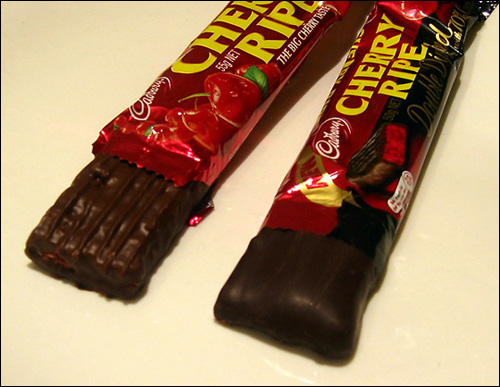
I remember in 2000 when Nintendo Magazine System, Nintendo’s print media authority for Australia, printed an apology regarding a recent $1 price hike – a consequence of confusion regarding the government’s recently introduced goods and services tax. The drama was a little too confusing to pinpoint where exactly the blame lied, but despite that NMS was very transparent on the issue. It was clear that this page, following the news section, was intended to be direct, it’s significance marked with a solid fill black background and white typeface, foot noted with the editor’s signature – this would certainly catch the reader’s attention. Every time an inevitable price hike made the rounds – which wasn’t very often, mind you – NMS‘ team matched the hike with an increased page count and formal notification to the reader. NMS had successfully kept its readers paying less than a fiver for its first four years of publication (1993-1997). The price was one of the magazine’s core assets, so seeing it rise was as much a burden to them as it was to us, it’s as though the writers almost felt guilty for it, expressing genuine empathy and disappointment in such situations. I wonder though, at what ends would such a team justify a steeper price point, a premium, like that of Hyper‘s $8.95 to their readers in today’s climate. I guess perhaps it’s a good thing that they died off early.
This puts Hyper in an interesting position, it’s outlived NMS (been doing so for 8 years now) and is battling through a dreadful climate for all things print media. No doubt the magazine is slowly dying, that much can be assumed of almost all print media, even before you read the magazine*. Whether or not the premium price tag is a hindrance, I’m not sure. It’s more iconic of the desperate situation, me thinks.
I guess it’d be unfair to scrutinize Hyper over its inevitable death, particularly when I just evangelized a magazine wrought in advertorial bias, and (it must be said) a breeding ground for some pretty atrocious fan culture – scan through the reader artwork of Les and Skull’s Mailbag to catch my drift. This article will scrutinize Hyper though and probably quite heavily, because Hyper is frankly good enough that its worth holding onto.
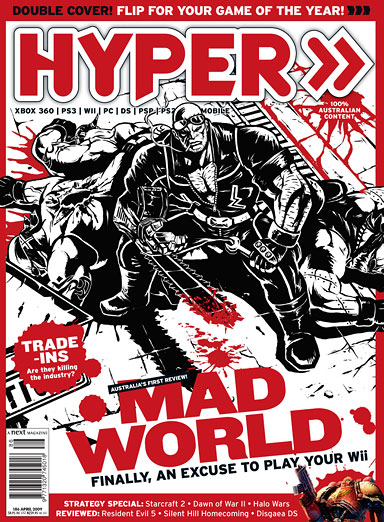
I rarely read the magazine anymore, and rarely read it much to begin with, after all (personally speaking) the UK is the premier place for quality games writing, they’ve just been doing it longer and stronger. It’s the reason why I’d pay a few dollars extra for the inflated cost of an import and to put up with jokes made about cacking one’s pants. Even though I don’t read it (much), Hyper is reputable. It’s important for Australian games writers to have a voice, and for the longest time Hyper has been that voice. Yet the future is undoubtedly dire, the pending death of the print medium and a slow crawl towards change are at halves the causes. Hyper needs to cocoon its future security and repackage its identity, so that it can survive as both EDGE and Retro Gamer have.
Perhaps the worst thing I could lay against Hyper (not that this is an intentional bashing by a narcy blogger kid, I wouldn’t dare to stoop) is Pixel Hunt. Headed up by contributors within the Hyper fold, Pixel Hunt is a free Australian e-magazine which in the past year has managed to reach monthly circulation and a 70 page spread – only 30 odd pages shy of Hyper. It should be noted that the typeface is much larger, but it kinda balances out with large dumps of text filling most pages in contrast to the surprisingly image rich Hyper. The ratios don’t really matter, even if Pixel Hunt is say 1/2-2-3 of the content of Hyper, the price point is difficult to wager against. Pixel Hunt is 100% free, you can go and download it now, go ahead, I recommend you give it a squizz, you can access all the back issues too. The content in Pixel Hunt is significantly more editorial focused, even the typical reviews and previews have been given a more progressive slant, thanks to the some smart thinking on behalf of editor Dylan Burns. It’s not a perfect beast, the large amounts of text can be rather ghastly as with the size of the typeface, also a significant proportion of the editorial and discussion lacks proper critical depth. Still you can’t argue with free, can you? This leads to the inevitable point that when a rogue source, written by writers who also contribute to your news stand magazine are putting out similar dosses of more or less equivalent content for free, your business is no doubt being jeopardized. I’m not saying that Pixel Hunt is trying to steal the reigns of Hyper, any digital games source is doing similar things, rather it serves as a dire warning. As Daniel Wilks suggests in his editorial, print media is too slow for the web, the web, the same medium which serves the enthusiasts that read his magazine (his words not mine). In which case, why bother to compete by mimicking the web Daniel if you’re fighting a battle that you know you’re going to lose? The web has nudged you out of your previously assumed position, you either have to change or face inevitable death – that’s the unfortunate truth. Of course, you don’t need some renegade writer like me pointing that out for you, you’re already much aware.
I wouldn’t have dismissively toned the last point if it wasn’t for the following few paragraphs, and this is where EDGE and Retro Gamer fit in, I referenced these guys for good reason. While readership has waned a little for these magazines (most notably for EDGE for giving so much away free online, yays!), they’re sustainable, sustainable because they’re rich in editorial and feature based content that can only be found in their ink. It’s called incentive. These two outlets provide high quality exclusive content which is not available online, filled with pages of well articulated opinions, critiques, analysis and commentary on games – they’ve always been this way and it’s why they’ve managed to burrow so deeply into their selected niches, and be respected publications for it.
In contrast, Hyper is still front-loaded with the same news, reviews and previews nonsense, and according to Wilk’s editorial, they’re given the higher priority than features. The reviews are well written, always have been, they also exert an underlying sense of Australian ocker while abiding by the norms of the commedic culture created by predecessors like Cam Shea. But are these differences really worth the entry fee?
Hyper‘s content format has changed very little over the years, it’s still news, previews, features, reviews and some editorial asides followed by reader mail and the always interesting GFK sales data. The shift towards individualizing the identity of the magazine hasn’t really happened yet. This isn’t a blame game, as I obviously cannot point at the reasons why Hyper‘s operations are still largely the same as ever, whether it be a conscious decision of the editors or publishers etc. They are serving content that people clearly want to eat, yet many of those people have also already migrated. I imagine then that this is an awkward reality to face. Whatever is going on behind the scenes though, as mention in the reviews editorial, reviews and previews are still prioritized, and to me, that is a grave mistake.
![]()
Conversely, Pixel Hunt, you’ll remember is straying away from this tired formula. In the editorial of issue 5, editor Dylan Burns confirms that the e-mag format simply can’t compete with the by the minute updates of the web, so in order to combat this, he asked his writers to change the nature in which they assess games for the magazine. Subsequently in the next issue not only did these changes take place, but the magazine also was filled with a sizable 30 pages of original feature pieces, including interviews, retrospective and opinion pieces. Reviews are still incremental, perhaps the main component of the magazine, but the way in which they’re conducted is different to convention. All of these examples culminate in a very unique and worthwhile selection of monthly writings. Essentially the magazine is out-Hypering what Hyper ought to be doing in order to survive, it’s almost insulting for the print magazine, and it makes me consider that maybe they deserve their inevitable demise as they lack the forward thinking to write outside of the box. This is why I’m less sympathetic towards the magazine.
Another suggestion for them would be to grow a proper online presence and leverage it for magazine sales in the same vein as the Imagine publishing circle of multiplatform magazines achieved with TotalGames.net. The idea serves both the readers and writers, but it’s perhaps too late. They shouldn’t outsourced their previous attempt at creating a Hyper web portal in the late 90s. Imagine the thought for a second; a fully fleshed out Hyper website with good editorial, slick design and a strong fan base. Would have probably drilled trite Australian fan sites like Aussie-Nintendo, PALGN and Vooks into the ground had Hyper got their act together. Oh well.
I don’t dislike Hyper, and this post isn’t an attempt to ridicule the magazine in any way. As pricey as it may have been, I’ve enjoyed most of what I read (although the trade-in games feature was intentionally very one sided). As I think I’ve well justified, this magazine needs to evolve or continue on a downhill slope of circulation. I guess a good part of my commentary is biased by my lust for a single publication to air critical game discussion, anecdotes and commentaries, and it’d be great if Hyper was that magazine.
The editorial shift would be in their best interests, so long as its gradual, allowing readers to warm into the idea (as EGM were doing on they way out). It cures the need to play catch up with the web and provides greater incentive to readers. Reviews can read more like personal responses, or discussion of the game, rather than evaluation. Maybe drop the price too, I preferred the ol’ $4.95, although, that’s easy for me to say. The Cherry Ripe on the other hand requires a much simpler solution. Half the price and stick it in a refrigerator.
*I haven’t fact checked this at all, like I said, it’s assumed by the price, staff, editorial and so forth. It’s a pretty safe bet to make, but if I’m wrong then please tell me about it.




 Game Design Companion: A Critical Analysis of Wario Land 4 - $7.99
Game Design Companion: A Critical Analysis of Wario Land 4 - $7.99 Level Design: Processes and Experiences
Level Design: Processes and Experiences Speed Boost: The Hidden Secrets Behind Arcade Racing Design - $5.99
Speed Boost: The Hidden Secrets Behind Arcade Racing Design - $5.99 Adventures in Games Analysis: Volume I - $5.99
Adventures in Games Analysis: Volume I - $5.99







